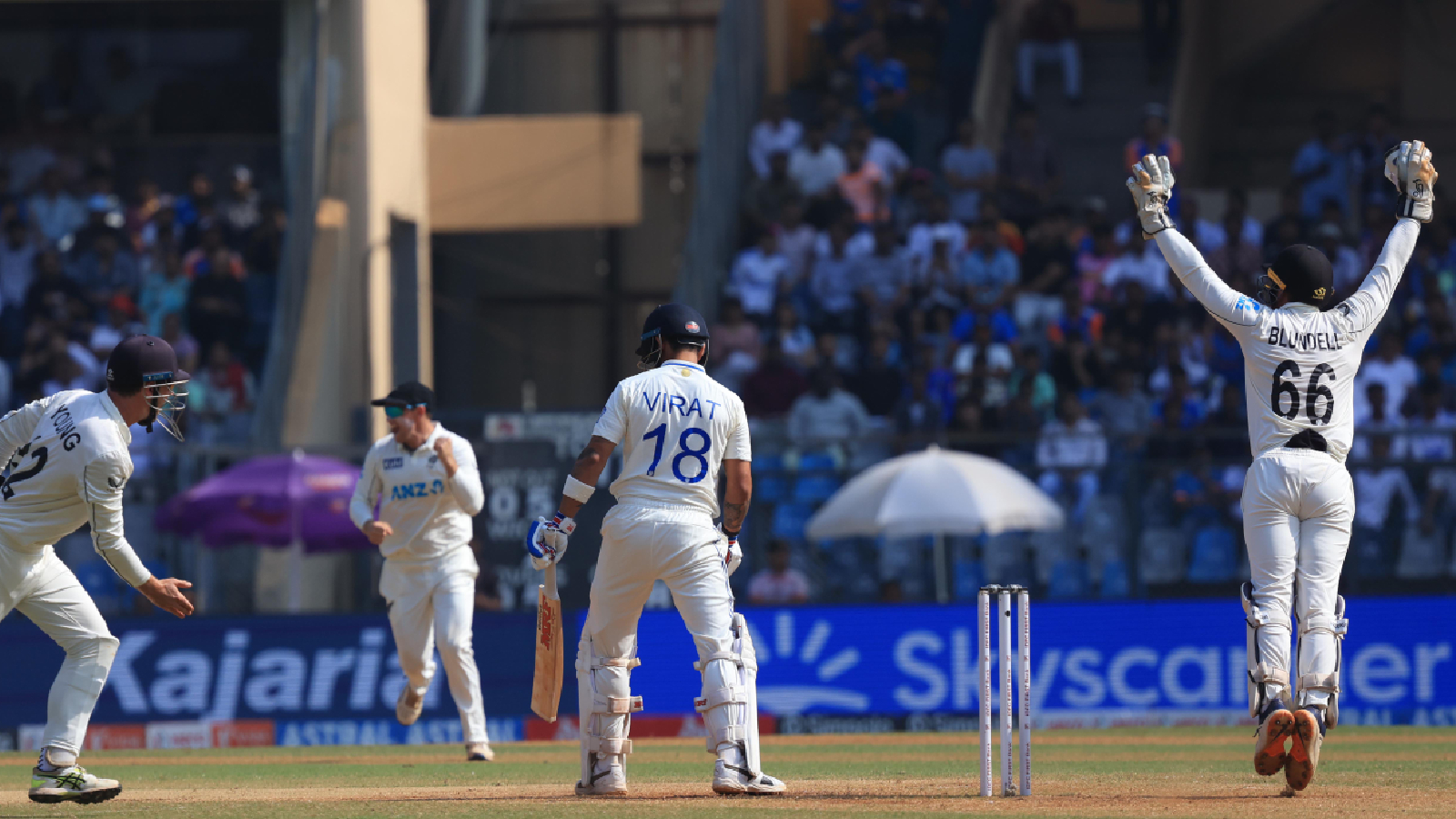The failure of skipper Rohit Sharma and Virat Kohli to effectively deal with spin-friendly tracks in the 0-3 home debacle against New Zealand was attributed to their absence from domestic cricket for the last decade. But the likes of Yashasvi Jaiswal and Sarfaraz Khan, who have played a lot in the Ranji Trophy in the last few years were also not able to stand up to be counted when it mattered the most.
Former India batsman and coach WV Raman believes the pitches provided for home Test matches have hardly any similarity to surfaces the players encounter in domestic cricket. He says Tests should be played on traditional good pitches that batsmen coming through the ranks get.
“Why are we not giving the conditions we get in domestic cricket for Test matches?” Raman counters when asked whether the BCCI should prepare spin-friendly decks in Ranji Trophy.
Despite coming through a strong domestic circuit, the current generation of India batsmen and those knocking on the national team’s door hardly get to play on turning pitches that are prepared for Test cricket.
“Rather than asking why we don’t give turning tracks in domestic cricket, why are we not giving good tracks for Test cricket? In recent times, the Indian pace attack is much feared. Why do we think that our bowlers can’t get 20 wickets in good conditions, especially with the spinners we have?” Raman demands to know.
Over the past decade on the domestic circuit, teams rolling out rank turners has become a rarity with BCCI coming up with various diktats to curb this propensity. In the aftermath of the 0-4 series losses in England and Australia in 2011-12, the then technical committee of the board made 6mm of grass on pitches mandatory in the 2014-15 season.
However, the practice was discontinued the following season following complaints from state units and players and in 2016/17, BCCI introduced a new format where league matches were played at neutral venues. With neutral curators overseeing pitch preparation for Ranji Trophy matches, leaving 3mm grass has been advised, although there is no written rule.
“We tend to be reactive. The 6mm grass rule, for example, produced nothing good for Indian cricket. Decent medium pacers were looked upon as unplayable bowlers. Batsmen lost confidence and spinners were not part of the game. All this adds up. It was nine seasons ago and the lack of good spinners and also the (diminishing) ability of batsmen to play against good spinners is obviously built up,” Raman says.
In the past, players coming up through the domestic grind got used to varied conditions, including seaming green decks as well as raging turners. In recent times with neutral curators in play, rank turners are disappearing.
“We say we cannot have underprepared pitches. So host associations are wary of providing turners.Then why do we suddenly wake up when we don’t get results in Test cricket?,” Raman asks.
He recalls the uproar when any team in domestic cricket rolled out a raging turner. “In domestic cricket, whenever a track was given which aided spin, the entire nation would go up in arms. Our current set of batsmen didn’t drop from heaven. They came through the same system. Just give them proper pitches to showcase their skills,” he argues.
Players key, not pitches
Having coached extensively in domestic cricket and also internationally, Raman believes changing pitches in Ranji Trophy won’t help.
“How many of these players have played 4-day or 5-day games in the recent past, except in this Duleep Trophy? The international schedule does not give time. So that is something we also need to look at. It is not about the kind of tracks that we give in domestic cricket, it’s the kind of frequency of red-ball cricket that they play.”
Former India leg-spinner Laxman Sivaramakrishnan believes the quality of spinners as well as batsmen’s ability to play them has declined in recent years. And he warns that playing on rank turners will affect the quality of tweakers coming through.
“When you play on rank turners, the pitch does everything for you. You are not doing anything. You are just putting the ball there. The one who puts it there more consistently wins. India should be playing on good pitches because they have the skill,” he says.
As far as batsmen’s ability to play spin on such pitches, Siva sheds light on where the problem lies. “Most Indian batsmen are front-foot players. On a turning track, if you’re playing on the front foot, as a spinner that is 90 percent of the battle won. You are playing the ball when it is still deviating, and you are playing with hard hands. Whereas if you play off the backfoot, you allow the ball to turn and then decide your shot.”
Sivaramakrishnan, who famously helped Sachin Tendulkar ace the battle with Shane Warne in the 1998 home series, picks the example of former India opener Navjot Singh Sidhu to drive home the point. “Against left-arm spinners, you can comfortably play off the backfoot. It will make him think he is marginally short and he will bowl fuller. Everyone talks of Tendulkar, but it was Sidhu who did it first to Warne. He practised a lot to play off the backfoot to good-length balls and when he (Warne) bowled fuller, he went bang. It doesn’t matter what surface they play on, it is about how they play spinners. Use the depth of the crease,” Siva advises.



